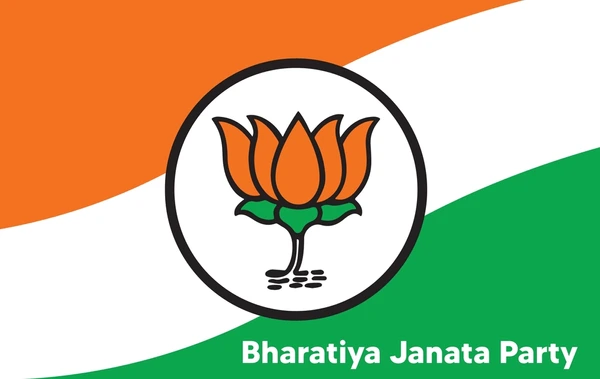By Ramakant Chaudhary
As India gears up for the crucial Lok Sabha elections, the political landscape is ablaze with fervour over the anticipated “400 Paar” and other strategic manoeuvres in the dance of democracy. According to the recent India Today Mood of the Nation poll survey flashed on February 8, 2024, the Bharatiya Janata Party (BJP)-led National Democratic Alliance (NDA) is all set to secure a commanding victory with an estimated 335 seats. In contrast, the INDIA bloc, comprising a coalition of 27 Opposition parties, faces a challenging outlook, potentially encountering defeat if the elections were held today. This revelation underscores the intensity of political currents as the nation approaches this pivotal electoral milestone.
The poll survey indicates that the BJP-led NDA is poised to maintain its hold on power by securing 335 seats, comfortably surpassing the 272-seat threshold (543 strength of Parliament) required for government formation. However, despite its expected victory, the alliance is projected to experience a decrease of 18 seats. Meanwhile, the INDIA coalition emerges as the biggest gainer, poised to secure approximately 38.3 percent of the vote share in the upcoming 2024 Lok Sabha polls. The Congress party is anticipated to secure 19 percent of the vote share, while the BJP is likely to clinch 39.6 percent, according to media reports following the survey’s telecast.
The BJP is projected to secure 304 out of 543 seats, reaffirming its ability to independently command a simple majority. This surpasses its previous tally of 303 seats in 2019, demonstrating the party’s continued strength and electoral prowess. The Congress may become the second-largest party with 71 seats, marking an increase of 19 seats from the previous election. The remaining 168 seats will be secured by other entities, including regional parties and independents.
A Glance Over Survey Data:
NDA—335 seats; INDIA—166 seats; Others—42 seats.
BJP—304 seats; Congress—71 seats; Others—168 seats.
Projected Seats (If Lok Sabah Polls Were Held Today):
North (180 seats)
NDA—154 seats
INDIA—25 seats
Others—1 seat
South (132 seats)
NDA—27 seats
INDIA—76 seats
Others—29 seats
East (153 seats)
NDA—103 seats
INDIA—38 seats
Others—12 seats
West (78 seats)
NDA—51 seats
INDIA—27 seats
Others—0
North East (11 seats spanning 7 states)
NDA—8 seats
Congress—2 seats
Others—1 seat
The survey findings underscore the electorate’s inclination towards the BJP, driven by a combination of welfare initiatives and a compelling nationalistic narrative championed by the party. The BJP’s strategic fusion of social welfare programs and a resonant narrative centered on patriotism seems to have resonated deeply with the populace, influencing their voting preferences.
PM Modi’s legacy is defined by the construction of the Ram Mandir, acknowledged by 42 percent of respondents (during the survey conducted between December 15, 2023, and January 28, 2024), while 19 percent cite raising India’s global stature. The revocation of Article 370 is notable for 12 percent, and handling the Covid-19 pandemic is praised by 20 percent. Additionally, 17 percent consider the Ram temple consecration a major achievement, and 14 percent recognize maintaining a corruption-free image. Unemployment concerns 18 percent of respondents, while 24 percent see price rise as a major failure. Covid-19 management is viewed as a failure by 13 percent. Unemployment is the top issue for 26 percent of Indians, followed by price rise for 19%. Opinions on reducing corruption are divided, with 46 percent saying ‘Yes’ and 47 percent saying ‘No’
As Prime Minister Narendra Modi prepares for a potential third term, his enduring influence on the nation’s political landscape continues to be profound and far-reaching. Widely regarded as a transformative figure in Indian politics, Modi has left an indelible mark on various aspects of governance, policy-making, and national discourse since assuming office in 2014.
Modi’s leadership style, characterized by a strong emphasis on economic development, national security, and cultural identity, has resonated deeply with a broad spectrum of the Indian populace. His ambitious initiatives, such as “Make in India,” “Digital India,” and “Swachh Bharat Abhiyan,” reflect his vision of a modern, prosperous, and self-reliant India.
Furthermore, Modi’s adept navigation of international relations has elevated India’s global standing, with significant diplomatic achievements and strategic partnerships forged with key nations across the world. His proactive engagement on the global stage, coupled with a robust foreign policy agenda, has bolstered India’s position as a prominent player in international affairs.
Moreover, Modi’s leadership has been characterized by a relentless focus on inclusive development, aimed at uplifting marginalized communities, empowering women, and bridging socio-economic disparities. Initiatives such as “Jan Dhan Yojana,” “Pradhan Mantri Awas Yojana,” and “Ayushman Bharat” underscore his commitment to inclusive growth and social welfare.
As Modi embarks on a potential third term, his influence on the nation’s political trajectory remains formidable, with his leadership style, policy priorities, and vision for India poised to continue shaping the country’s future direction. However, with the evolving socio-political equations and the emergence of new challenges, the extent of Modi’s influence and the trajectory of his leadership will be closely watched and debated in the coming years.
Conversely, the opposition parties face a formidable challenge in presenting a cohesive front and providing a viable alternative leadership to Prime Minister Modi. The absence of a unified stance and a clear leadership alternative within the opposition ranks emerges as a significant obstacle hindering their electoral prospects. This lack of unity and coherent leadership strategy among the opposition parties may further diminish their ability to effectively counter the BJP’s electoral dominance and sway the electorate in their favour.
Ramakant Chaudhary is senior journalist and currently working with PRP Group as Content Head. He has worked in various editorial roles with Financial Express, Mint (Hindustan Times Group), The Times Of India, Jagran Post (Dainik Jagran Group), The Pioneer, and The Political and Business Daily. He writes on politics, government policy, economy, infrastructure, real estate, social issues, lifestyle, and health

